How to Donate Your Breast Pump When You No Longer Need It
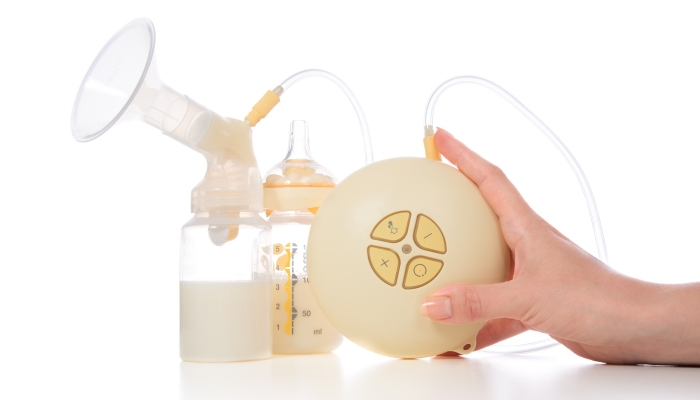
- Breast pumps are officially defined as medical equipment.
- They should only be passed on if they are designed specifically for use by multiple users.
- Only donate your breast pump if you’re sure it’s a closed system pump, it’s in good working order, and replacement parts are available.
- You can call 211 in the US, or contact local organizations directly, to see if they are willing to accept your donation or put you in touch with someone else who might.
Breastfeeding your baby is a special experience you’ll never forget.
Pumping can be a useful tool to support your supply wherever you are in your breastfeeding journey. It takes effort and dedication to pump and you made that commitment. You and your pump put in the hours so your baby can have all the benefits breast milk has to offer.
When you’ve finished pumping, maybe you’d like to see your used pump go on and help more babies get those same benefits. If you’re wondering how to donate your breast pump, you have some options.
When to Stop Using a Breast Pump
Breast milk is the natural source of nutrition for your baby and is all they need for the first six months. However, the benefits don’t stop there.
The American Academy of Pediatrics (AAP) supports continued breastfeeding for two years and beyond. In 2022, an AAP Technical Report titled Breastfeeding and the Use of Human Milk confirmed this.
The report states, “Human milk in the second year of life continues to be an important source of macronutrients and immunologic factors for the growing toddler” and offers protection from a host of health concerns, both for your baby and you.
Whether you feed only at the breast, combine breastfeeding and pumping, or feed your little one solely on expressed milk, any breast milk you give your baby matters.
You can continue pumping as long as you’d like or stop when it feels right for you and your baby. When and how you stop pumping is a personal choice.
Can Old Breast Pumps Be Donated?
The answer to this question is not so clear and will depend on several factors. To find out whether your used breast pump is suitable for donation, you need the following information:
- Is your breast pump designed for a single-user or multiple? Many breast pumps are single-user devices, sold for personal use only and so are unsuitable for donation.
- Does your breast pump have an open or closed collection system? Closed systems have a barrier protecting the pump motor so all parts coming into contact with milk can be thoroughly cleaned and sterilized.
- Are replacement parts available for your used breast pump? Even on closed system pumps, all breast pump accessories should be replaced for each new user.
You should also consider the efficiency of your pump’s motor before donating. A failing pump can jeopardize the new owner’s milk supply. Check the breast pump manufacturer’s website for an estimated life span in hours. This can help you judge how much life is left in your pump’s motor.
If your pump has a valid warranty you may be able to get it serviced, but it’s unlikely you’ll be able to transfer the warranty to any new owner.
Used breast pumps must be thoroughly cleaned and sterilized before donation:
- With clean hands, separate all parts and rinse well.
- Use a bottle brush for hard-to-reach areas.
- Wash with soap in a dedicated bowl or in your dishwasher.
- Check parts regularly for signs of damage, and discard items with the following:
- discoloration
- rips and tears
- misshapen parts
- Rinse with cold water.
- Sterilize with boiling water, steam, sterilizing liquid or tablets, or a UV sterilizer.
- Wipe down the motor unit, pump controls, power leads, and switches with manufacturer-approved wipes.
- Leave to air dry and store in a clean sterile container.
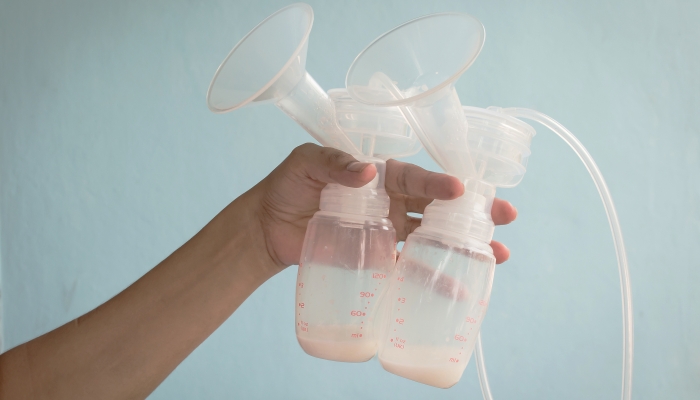
What Types of Breast Pumps Can Be Donated?
The only types of breast pumps suitable for donation are those which are:
- Closed system breast pumps
- Designed for multiple users
- In good working order with replacement parts available to buy
The Food and Drug Administration (FDA) views breast pumps as medical devices that shouldn’t be shared unless specially designed for use by more than one person. This is different from hospital-grade, a term some manufacturers use but isn’t recognized by the FDA.
Check your original packaging or paperwork to make sure that your breast pump falls into these categories. If you’re not sure, do an internet search for the make and model or contact the pump manufacturer for confirmation.
Make sure anyone receiving your donation can source replacement accessories. Most manufacturers recommend you replace these every three to six months depending on usage. Regular use, frequent washing, and exposure to heat can all degrade loose pump parts, increasing the risk of contamination and causing your pump to lose suction.
What Types of Breast Pumps Cannot Be Donated?
If your breast pump has an open collection system and is designed for a single user, it shouldn’t be donated. Unlike closed-system pumps, open system pumps don’t have a barrier protecting the pump from contamination.
In an open system pump, milk could flow back into the pump mechanism. This makes them difficult to clean. Mold and bacteria could grow unseen and pose a health risk to young babies whose immune system is still developing.
If you have cracked nipples when using your breast pump, blood could also get into the mechanism and increase the risk of infection.
Due to the potential links between infection and contaminated breast pump parts, the CDC has issued updated guidance on how to keep your breast pump kit clean.
Where to Donate Your Old Breast Pump
First, check with family and friends to see if they know anyone who may benefit from your old pump.
If you’re in the US, you can call 211, a non-emergency referral service that connects you with local community groups willing to take donations. You can also search for International Board-Certified Lactation Consultants in your area who may know of individuals or groups looking for donations.
The Birthing Circle supports families in the Maryland, Virginia, and DC metro area. They accept breast pump donations and can be contacted here
Otherwise, you can contact the following organizations to see if they accept breast pumps directly or can put you in touch with someone else who does:
- Local hospitals
- Women’s shelter
- Breastfeeding support groups
- Milk, diaper, or food banks
- Projects that organize baby product swaps
- Charitable organizations that support children and young families
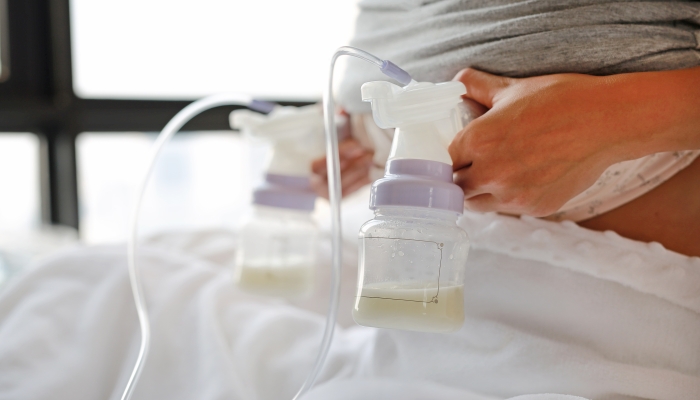
FAQs
How long do breast pumps usually last?
This depends on your pumping schedule. Most pump warranties last for one year, although pumps can last much longer. If you’ve done a lot of power pumping, your pump may not last as long.
Is it okay to use a second-hand breast pump?
According to FDA guidance, only closed-system breast pumps designed specifically for multiple users are suitable for reuse. As with all baby products, only use second-hand items from a trusted source. You may be able to get a new pump through your insurance plan, Medicaid, or WIC assistance.
Can you reuse an old breast pump for your next baby?
You can, as long as you check your pump’s in good working order, has replacement parts available to buy, and is a closed system that can be thoroughly cleaned and sterilized.
How should breast pumps be stored?
Your breast pump should be cleaned and sterilized before it’s packed away. Make sure it is completely dry and is stored in a clean, sterile container in a cool, dry area of your home.
Can breast pumps be recycled?
Manual pumps and the hard plastic parts of an electric pump can be placed in household recycling or taken to your local recycling center, including:
- Breast shields
- Flanges
- Connectors
- Valves
- Backflow protectors
Soft plastic or silicone pump parts cannot be recycled and should be placed in the regular trash, including:
- Teats
- Valve membranes
- Tubing
- Duck valves
- Liquid inserts
All powered parts must go to specialized electronic recycling centers. If thrown in the trash they can end up in a landfill and may contaminate soils and water sources.
Medela breast pumps can be returned for recycling. See the Medela recycles page on their website for details of their recycling program. You can request a shipping label here.
Spectra advises disposal of Spectra pump motors and power leads at your local PC recycling center.
Hygeia says their closed system pumps are recyclable, and although they have no formal recycling program, their returns policy states all products returned to them will be recycled.
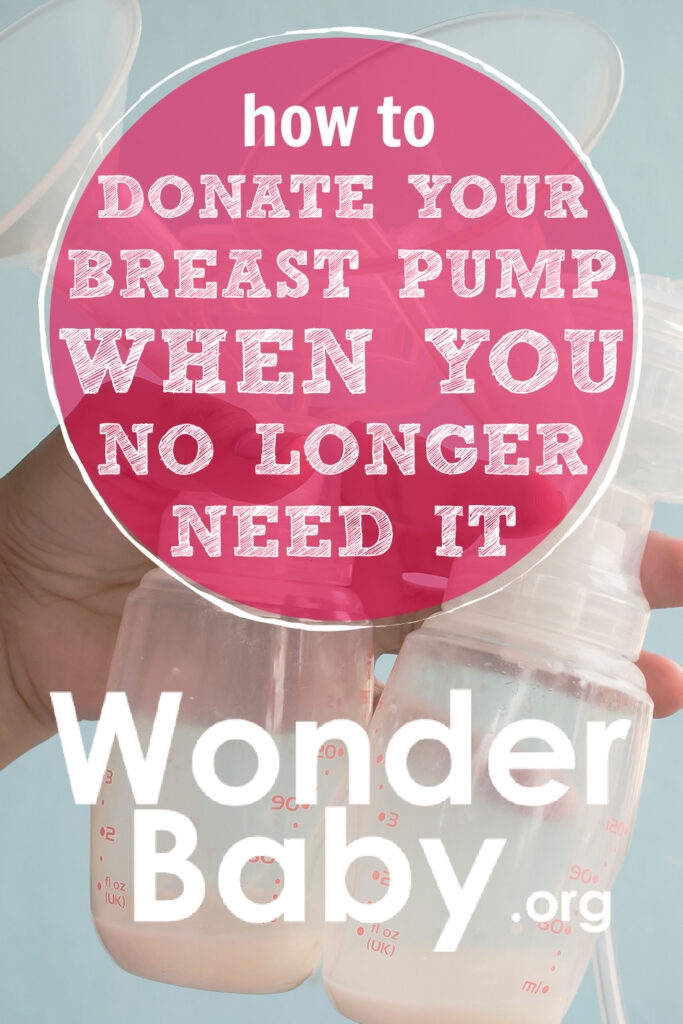
Related Posts
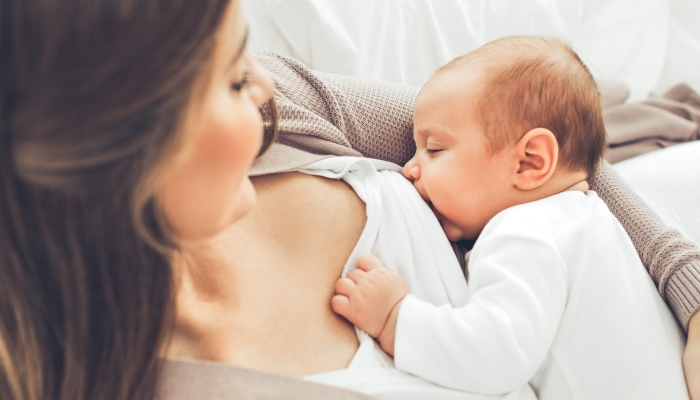
Breastfeeding, Sleep
Sleep and Breastfeeding: A Comprehensive Guide for Nursing Moms
Many people assume breastfeeding and sleep training don’t go together, but it is possible to help your baby sleep better while continuing your breastfeeding journey.

Breastfeeding
Comfort Nursing: Pros, Cons, and How to Stop
Find out what comfort nursing is, when should you worry about it, and how to stop or limit your baby's comfort nursing (especially at night!).

Breastfeeding, Product Reviews
5 Best Breastfeeding Chairs for Nursing Moms of 2023
Whether you want a gentle rock, a smooth glide, or a cozy cuddle to soothe your baby to sleep, you’ll have your pick of the best breastfeeding chairs on the...